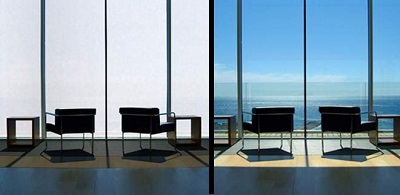Mood:
Topic: Intelligent Window
Tungsten trioxide is both an N-type semiconductor material and a "D0" oxide, and the dual identity gives tungsten oxide catalytic, optical and electrical properties, which makes it the basis of industrial manufacturing such as smart windows, electronic packaging, secondary lithium batteries and gas sensors.
From the mid-1970s to the early 1980s, most studies on the electrochromic properties of tungsten trioxide have focused on electronic display devices. However, due to the limitation of its low color conversion rate, the research gradually turned to the emerging fields such as smart windows. Although the latter requirement for the response time of color change is not as strict as that of the display device, it is still a widely concerned research focus until now.

However, membrane dissolution and ion residue will occur with the injection and extraction of ions during the use of WO3 thin films, and the electrochromic property will decline significantly, which limits the widespread use of electrochromic devices. So scientists are looking for new materials with extraordinary properties, but no perfect materials have entered the commercial market from the laboratory so far.
Recently, scientists in the United States have linked titanium and tungsten, two materials with different crystal structures, to create a new material with a different structure, which was considered impossible in the past. But with advances in technology, scientists have been able to ensure that crystal bonds can last in everyday life and then be used in industry.
A mixture of several metals is usually called an alloy, but other materials can also be alloying. In semiconductors, for example, nitride and oxide alloys have been used successfully for a long time to change the functional properties of materials, and the changes usually occur slowly and the properties of the substrate can still be easily identified. In contrast, heterogeneous structural alloys are formed when compounds with completely different crystalline structures are mixed together. In these types of alloys, the mix ratio based on the composition changes in the structure. Sometimes unexpected properties are formed, which is quite different from the properties of the underlying material.
Scientists must understand both the properties of tungsten and titanium in the process of finding the materials needed, such as the electronic properties, structures, and long-term stability. In the laboratory, mixed oxides made of tungsten and titanium oxides are the primary focus of heterogeneous structural alloys that can be used in sensor technology, window coating or semiconductor technology.
Stanford Advanced Materials supplies high-quality tungsten products to meet our customers' R&D and production needs. Please visit http://www.samaterials.com for more information.

